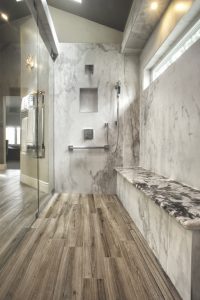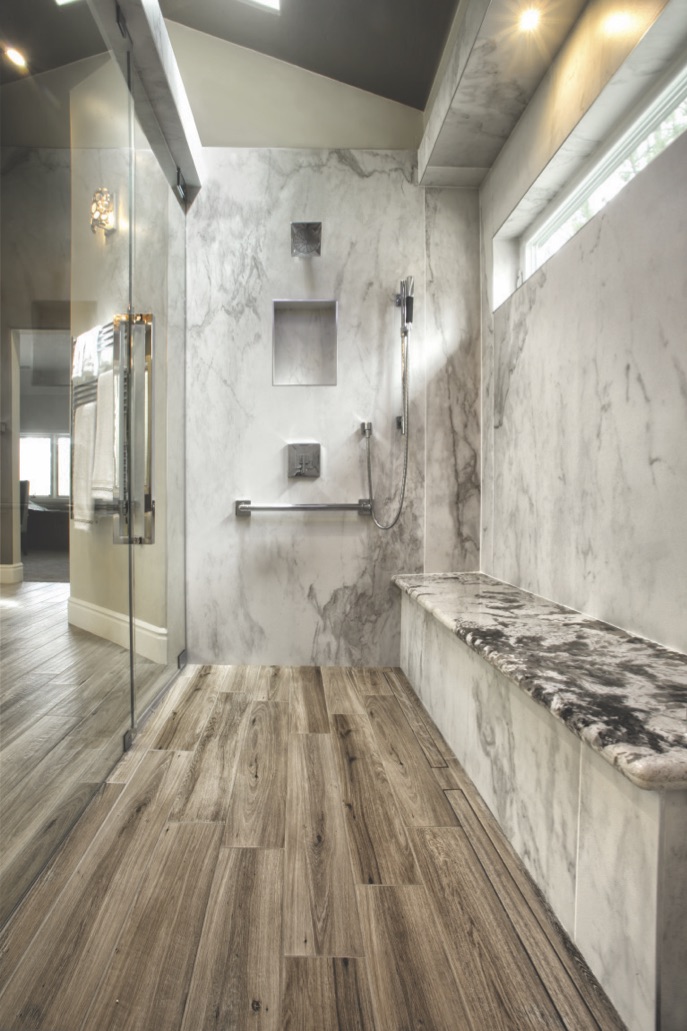With all the beautiful tile available today, it is sometimes difficult to make the perfect choice. However, when considering your selection of a floor tile in a stall shower, many decisions need to be made to ensure a safe environment.
Many times, the tile selection process for a shower floor is focused on the aesthetics of the installation being a beautiful blend of products that will further enhance the overall project. But the primary goal here is to obtain tile that will yield a safe surface on which to stand while using the shower.
The TCNA Handbook does offer some helpful information that can guide the selection of the appropriate floor tile. Under the header, “Coefficient of Friction and the DCOF AcuTest®”, it states the following: The DCOF (Dynamic Coefficient of Friction) measures the dynamic friction, which is the frictional resistance one pushes against when already in motion. Under this test, a slip occurs when pushing off with more force than the surface can resist. Tile which is tested to this protocol yields a minimum wet DCOF AcuTest value of 0.42 for ceramic tiles for level interior spaces expected to be walked upon when wet.

While this test does not identically mimic the process of standing in the shower (not walking) and is not level due to the slope to the drain, it does provide some guidance as to which tile may function better in wet conditions.
The Handbook further makes this statement: “According to the standard, tiles with a wet DCOF AcuTest value of less than 0.42 are only suitable for floor areas that will be kept dry. Polished tiles generally fall into this category.” Caution should be exercised when considering high-fashion polished tiles that are pleasing to the eye, but offer little resistance to slipping, especially when combined with soap, shampoo, and water.
For years the popular and functional selection of shower floor tiles resided with a 1” x 1” or
2” x 2” mosaic tile as shown in the attached photo. This small facial surface area tile provides a significant number of grout joints that can aid in providing a surface that offers good traction.
However, today’s consumers are demanding the use of larger tiles that offer a sleek look that slope to a linear drain located either in the center of the floor or at the intersection of the wall. These large-format tiles look great on the shower floor and offer a look not available in the past. Imagine combining a realistic woodgrain plank floor with a gorgeous marble wall that both offer the benefits of a porcelain tile.
After the tile has been selected and properly installed, the appropriate maintenance regimen must be instituted. Normally, a pH-neutral cleaner will work well for routine cleaning. However, if a residue of soap scum, body oil, shampoo, and/or cream rinse accumulate on the floor surface, the use of a high-alkaline cleaner may be needed remove the build-up. As always, carefully follow the directions on the container to ensure thorough cleaning and a trouble-free tile installation that will stand the test of time.







